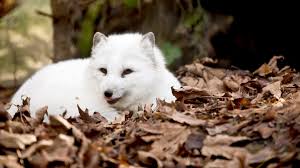This is the ability to maintain ecological processes over long periods of time. Sustainability of an ecosystem is the ability of that ecosystem to maintain its structure and function over time in the face of external stress.
Sustainability is strongly linked to ecosystem health. The more sustainable an ecosystem is, the healthier it is because it is able to “deal” with external stress better (i.e. limiting factors).

Methods of Biodiversity Conservation
Conservation of biodiversity is an essential part of the environment. By conservation, we do not mean preservation, but conservation means the utilization of natural sources in such a way that they are not allowed to destroy.
Read Also : Objectives of Water Treatment and Water Treatment Processes
The maintenance of species and ecosystems is a keystone sustainable development. Conservation of biodiversity includes all human efforts to preserve wildlife and plants from extinction as well as wise management of wildlife, plants and their environment.
1. In-situ Biodiversity Conservation
In-situ conservation means the conservation of species within their natural habitats, this way of conserving biodiversity is the most appropriate method for biodiversity conservation. In this strategy you have to find out the area with high biodiversity means the area in which number of plants and animals are present.
After that this high biodiversity area should be covered in the form of park natural sanctuary/biosphere reserve etc. In this way biodiversity can be conserve in their natural habitat from human activities.
2. Ex-Situ Conservation Methods
Ex-situ conservation involves the conservation of biological diversity outside of their natural habitats. This involves conservation of genetic resources, as well as wild and cultivated or species, and draws on a diverse body of techniques and facilities.
Ex-situ Biodiversity conservation can be done as following:
By forming Gene banks: In this store seeds, sperm and ova at extremely low temperature and humidity.
It is very helpful to save large variety of species of plants and animals in a very small space e.g. sperm and ova banks.
Seed Forming Zoo and botanical garden: for research purpose and to increase public awareness collecting living organisms for aquaria, zoos and botanic gardens.
Collections of In vitro plant tissue and microbial culture.
Captive breeding of animals and artificial propagation of plants, with possible reintroduction into the wild.
Ex-situ biodiversity conservation strategy also plays an important role in recovery programmes for endangered species. The Kew Seed Bank in England has 1.5 per cent of the world’s flora – about 4,000 species – on deposit.
In agriculture, ex-situ conservation measures maintain domesticated plants which cannot survive in nature unaided.
It provides good platform for research opportunities on the components of biological diversity.
Read Also : On-site Municipal Wastewaters Treatment
Some of the institutions also play a major role in public education and in increasing awareness among public by bringing members of the public into contact with plants and animals they may not normally come in contact with. It is estimated over 600 million people visit zoos every year worldwide.

Fig. 4: Methods of Biodiversity Conservation

